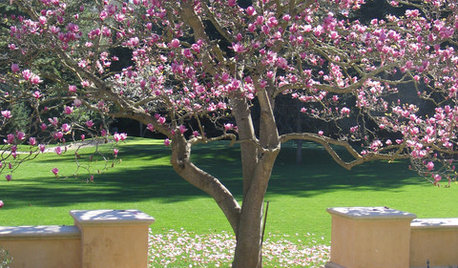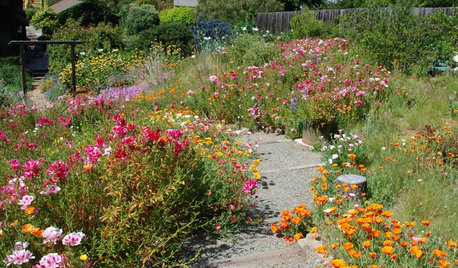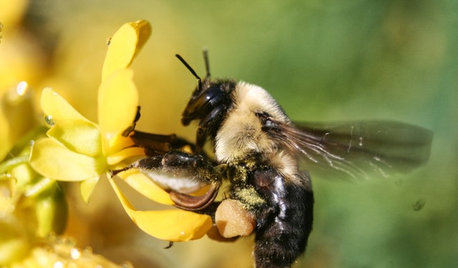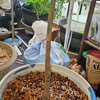death by neem oil?
emachado19
9 years ago
Featured Answer
Sort by:Oldest
Comments (28)
Dtunesgw
9 years agoemachado19
9 years agoRelated Discussions
can neem oil mix with safer's soap?
Comments (9)I'm a bit late to this discussion lol but I'm curious as to why it's not ok to use neem oil with Safer insect killing soap? The original Safer insecticidal soap is only potassium salts of fatty acids... No sulfur. Safer brand does also make a 3-in-1 concentrate which contains both sulfur and potassium salts of fatty acids, but this is not their original or only product. On a further note, castile soaps like Dr. Bronner's usually contain potassium hydroxide. Potassium salts of fatty acids are made by combining natural plant oils with alkali - typically potassium hydroxide. As far as I can tell, castile soaps & Safer insecticidal soap are very similar... P.S. Salts based on long chain fatty acids are the best/safest for plants. Salts made from shorter length fatty acids can have higher phytotoxicity....See MoreNeem oil
Comments (5)From another thread: RE: another neem question clip this post email this post what is this? see most clipped and recent clippings Posted by kimmsr 4a/5b-MI (My Page) on Mon, Jun 1, 09 at 20:53 Everything I have read about Neem Oil products states that they are broad spectrum poisons, they kill insects on contact and through ingestion. Some of these sources state that there is nothing to indicate these products harm beneficials, but that no studies have been done to see if there may be harm to beneficials. I have yet to find a pesticide that only kills insect pests and does not harm beneficial. How would this product know that this insect is not to be killed? Does the beneficial insect have some kind of ID tag to tell the Neem Oil not to kill it? If you use Neem Oil products, or any other pesticide, read and follow the label directions carefully. However the objective of an organic gardener should be to not have to use any pesticide. -------------------------------------------------------------------------------- RE: another neem question clip this post email this post what is this? see most clipped and recent clippings Posted by organicguy (My Page) on Mon, Jun 1, 09 at 21:42 I have never seen it claimed anywhere that Neem kills anything on contact. It is effective against many types of insects, including LEAF MINERS!! Here is some accurate information put out by Cornell Cooporative Extension on Neem, how it works and what it is effective against - Neem oil. Another group of neem products is made from the oil fraction of neem extract. The active ingredient is generally listed as "clarified hydrophobic extract of neem oil," and is labeled as a fungicide, insecticide, and/or miticide. Insects and mites susceptible to paraffinic (petroleum-derived) horticultural oil are likely to be controlled to some extent by neem oil products. The mode of action is probably similar to other oils, namely membrane or cuticle Every effort has been made to provide correct, complete, and up-to-date pesticide recommendations. Nevertheless, changes in pesticide regulations occur constantly, and human errors are still possible. These recommendations are not a substitute for pesticide labeling. Please read the label before applying any pesticide. The information given herein is supplied with the understanding that no discrimination is intended and no endorsement by Cornell Cooperative Extension is implied. This document is a product of the Landscape Horticulture Program Work Team at Cornell University. Primary contributors include Paul Weston, Department of Entomology and Dan Gilrein, Cornell Cooperative Extension, Suffolk County. Prepared June, 2007 disruption and/or interference with respiration. Note that the activity is distinct from that of azadiractin-based insecticides. Other neem products. In addition to products based on azadirachtin or neem oil, there are also other pesticides derived from neem. One such product, K+ Neem, is an insecticidal soap made from neem oil, listed on the label as potassium salts of fatty acids. Mode of action (membrane disruption) and efficacy against arthropods is probably similar to that of other insecticidal soaps since the product has no measurable quantities of azadirachtin. What does neem control? Although neem has a fairly broad spectrum of activity against insects, some insects are more susceptible than others, and results often vary from pest to pest. Many leaf-feeding larvae are susceptible to azadirachtin-based products; this list includes lepidopterous larvae (caterpillars), leaffeeding beetle larvae, and sawflies. [NOTE: we have not seen significant efficacy against viburnum leaf beetle larvae.] Fluid-feeding insects such as aphids, leafhoppers, and plant bugs are also fairly well controlled by products based on azadirachtin, as are dipterous leaf miners and fungus gnats. Adults of a number of insect groups are also responsive to azadirachtin; Japanese beetles and grasshoppers reportedly avoid neem-treated foliage. Neem-oil products are reportedly effective against aphids, whiteflies, scale crawlers, and spider mites. Neem products are generally not effective against mealybugs, weevils, thrips, or adult scales. Use of neem products against pests not on the label is not advisable because efficacy against these pests has not been determined (or is inadequate), not to mention the fact that such uses are illegal in New York. Here is more info from another reliable website - How Neem Oil Works: According to the EPA, "Azadirachtin and Clarified Hydrophobic Extract of Neem Oil are derived from the natural oil found in seeds of the neem tree.... When the natural neem oil is removed from the seeds and treated with alcohol, virtually all of the azadirachtin and related substances separate from the oil itself. The remaining oil - without the azadirachtin - is called Clarified Hydrophobic Extract of Neem Oil. Azadirachtin acts in the following ways: It deters certain insects, such as locusts, from feeding and it interferes with the normal life cycle of insects, including feeding, molting, mating, and egg laying." Neem Oil As Organic Insecticide: Pests Killed or Repelled: Neem oil kills some pests (after they've eaten leaves sprayed with neem oil), while it repels others with its strong smell. Neem oil is used to control many pests, including whitefly, aphids, Japanese beetles, moth larvae, scale and spider mites. Because it kills mites -- which aren't insects but, instead, related to spiders and ticks -- neem oil is listed as a "miticide." Sprays containing clarified hydrophobic extract of neem oil are also used as fungicides against rust, black spot, mildew, leaf spot, scab, anthracnose, blight and botrytis. Benefits of Neem Oil for Pest Control: Besides being an organic insecticide, using neem oil allows you to target pests, specifically, as opposed to beneficial insects (e.g., bees and lady bugs). By definition, "pests" are the insects eating your plants, and neem oil, properly applied, kills an insect only if it ingests the sprayed foliage (bees and lady bugs don't eat plant leaves). Ron The Garden Guy http://www.TheGardenGuy.org Informative articles, ongoing garden journal and interactive message boards. -------------------------------------------------------------------------------- RE: another neem question clip this post email this post what is this? see most clipped and recent clippings Posted by justaguy2 5 (My Page) on Mon, Jun 1, 09 at 22:00 Everything I have read about Neem Oil products states that they are broad spectrum poisons, they kill insects on contact and through ingestion. You posted a link in the other neem thread that indicated it doesn't kill on contact other than the same way any horticultural oil might on soft bodied insects like aphids. You have seen posted here information on it's harmlessness to bees unless sprayed directly on them and even then it isn't anywhere near a 100% kill. Info has been posted in threads you have participated in indicating that even bees collecting pollen of sprayed flowers aren't killed. You have seen information here about honey bee keepers spraying their hives with neem. You have seen here info from credible sources indicating lady bugs aren't harmed by it. It has been explained to you numerous times by numerous people precisely what science has to say about neem. Yet you continue to describe it as if it was Sevin. Let's be very clear on this: Neem may kill soft bodied insects that it is sprayed directly onto. Neem may kill insects that ingest plant material sprayed with it. Other than that neem appears to be pretty benign to everything else. Humans ingest the stuff. It's used in health care products. Neem is one of the safest, least toxic pesticides that is actually effective against a variety of common plant pests. Describing it as a 'broad spectrum, on contact' pesticide makes it sound like Sevin which it is not. So, do you *now* understand what neem is and what it is/isn't toxic to? -------------------------------------------------------------------------------- RE: another neem question clip this post email this post what is this? see most clipped and recent clippings Posted by gardengal48 PNW zone 8 (My Page) on Mon, Jun 1, 09 at 22:23 There ARE targeted insecticides.....those that only direct their effectiveness at specific insects or insect types. Bacillus thuringiensis (Bt) is a common example, milky spore is another. While neem does have a much wider target base than either of these two examples, it IS a directed insecticide, targeting primarily sucking and chewing insects - aphids, spider mites, mealy bugs, scale, etc. Since the beneficial insects like ladybugs, ladybug larvae, mantises, parasitic wasps, bees and butterflies are not classified as sucking or chewing insects and tend to feed on other insects or on non-plant parts, like pollen, the neem poses a minimal threat to them. And there have been tests/studies done to confirm that this is the case......if one bothers to do the research, it's not all that difficult to find. Depending on how the neem is applied, it can have a systemic effect - that is, it is transmitted into the plant tissues. Generally this is accomplished when used as a soil drench, as opposed to just spraying it on the foliage. The effect will be longer lasting when applied in this manner compared to the more common spray method. It is also found to have some deterrent qualities when used in this manner, discouraging some insects (the primary tests involved grasshoppers) from eating the treated plants at all. The effectiveness of neem is not immediate. Because of its course of action - essentially hormonal disruption - it often takes some time to see clear evidence of its effectiveness. It takes time for those insect digestive systems to breakdown, or for them stop to laying eggs. It is not the immediate knockdown, kill everything, broad spectrum 'poison' some seem to think. But it IS effective and it IS pretty darn benign. Those who persist in stating otherwise - i.e., that it is a non-effective, broad spectrum contact insecticide that will harm beneficials - do not have a good understanding of the product or how it works. Then again, I'm not sure they have much of an understanding of how ANY specific pesticide works :-) -------------------------------------------------------------------------------- RE: another neem question clip this post email this post what is this? see most clipped and recent clippings Posted by tapla z5b-6a MI (My Page) on Tue, Jun 2, 09 at 14:35 It is indeed wearisome to hear the same things rigidly offered over and over again. "You can't do this or that and belong to the good organic gardener's club - your goals should be .... well, they should be MY goals - the cure to everything under the sun is to add more organic matter to the soil. Incessantly pursuing dogmatic offerings in the face of an assortment of reasonable alternatives is not what posters here want to read. They don't come here to be preached to, but to gather useful suggestions and ideas so they can evaluate them for themselves. Telling them what they can and can't do, or what they should and shouldn't do is an affront to any individual's ability to make their own decisions or to reason through a problem on their own. Neem's scope of effectiveness is concentrated heavily on those insects with rasping and sucking mouth parts - the ones that feed on plant saps. Tertiary mortality of non-target species is EXTREMELY low. If you have an absolute '0' tolerance for any impact whatsoever on beneficial populations of insects and bugs, then avoid all insecticides, because there are none that will ONLY kill targeted species. If you personally decide you NEED an insecticide today (not in three years after your soil has been made healthier via the inclusion of more organic matter, and your plants are bursting with vim and vitality), then neem oil is one of the very safest choices you can make. Al -------------------------------------------------------------------------------- RE: another neem question clip this post email this post what is this? see most clipped and recent clippings Posted by organicguy (My Page) on Tue, Jun 2, 09 at 14:48 Al and Just A Guy, You hit a homerun! The "fanatics" that are against everything and anything are what make organic gardeners look like kooks to some. There are great completely organic products available that make organic gardening not only work, but practical and productive. To put these products into the category of toxic chemicals is not only uninformed abut irresponsible. My goal in over 50 years or organic gardening and farming has always been to keep as much toxic chemicals as possible out of my food and enviroments, while at the same time enjoying my garden, nature and the art of gardening itself. If I have to occasionally kill a beneficial to save a crop, I have no problem with that, because my healthy soil and crops soon attract many more to take their place. Ron The Garden Guy httpa://www.thegardenguy.org Informative articles, ongoing garden journal and interactive message boards - All FREE! -------------------------------------------------------------------------------- RE: another neem question clip this post email this post what is this? see most clipped and recent clippings Posted by tapla z5b-6a MI (My Page) on Tue, Jun 2, 09 at 15:29 Exactly - try as hard as you can, you/we still may find ourselves in a situation where we feel we need to use a product we might not normally use, and I'm not necessarily referring to neem oil, because it IS so innocuous. Reasonable people understand this and adjust. We can't tout the principles of IPM in one breath and eliminate the possible use of every insecticide known to man in the next and expect retain credibility. I've been a member of GW for a good number of years, and I used to visit this forum regularly, but I found myself constantly entrenched against the same one or two vocal individuals with extremely narrow perspectives about what was or wasn't a good garden practice. I just grew weary of it, choosing to only pass through occasionally (though I've spent a little more time here lately) and to look elsewhere for my fun. Al ********************************************************** More about Neem oil - something I wrote years ago: Neem Extract as an Insecticidecolor>size> In India mainly, but also Asia and Africa, grows a tree all plant enthusiasts should be aware of, Azadirachta indica, commonly known as the "neem" tree and a relative of mahogany. Extracts from the tree's seeds contain azadirachtin, a relatively safe and effective naturally occurring organic insecticide. Let me preface the comments following by reminding you that the terms "naturally occurring and/or organic" do not universally mean safe. Pyrethrums, rotenone, and even the very dangerous nicotine are all organic insecticides that should be handled with great caution. Neem extracts, on the other hand are very safely used in a wide variety of cosmetics, as a topical treatment for minor wounds, as an insecticide in grain storage containers, bins, and bags, and a whole host of other applications. Neem is very safe for use around birds & mammals. I'll limit this discussion to its use as an insecticide. Neem works in many ways. It is effective both in topical and a systemic applications. It is an anti-feedant, an oviposition deterrent (anti-egg laying), a growth inhibitor, a mating disrupter, and a chemosterilizer. Azadirachtin, a tetranortriterpenoid compound, closely mimics the hormone ecdysone, which is necessary for reproduction in insects. When present, it takes the place of the real hormone and thus disrupts not only the feeding process, but the metamorphic transition as well by disrupting molting. It interferes with the formation of chitin (insect 'skin') and stops pupation in larvae, thus short-circuiting the insect life cycle. It also inhibits flight ability, helping stop insect spread geographically Tests have shown that azadirachtin is effective in some cases at concentrations as low as 1 ppm, but some producers use alcohol or steam in the extraction of neem oil from plant parts, which causes the azadirachtin to be removed from the oil or diminishes the amount of azadirachtin in the product as well as its effectyiveness. Some products touting neem oil as an ingredient actually have no measurable amounts of azadiractin. I use what is referred to either as cold pressed or virgin neem oil. You may also occasionally find it referred to as 'raw' or 'crude' neem oil. Neem oil is most often used in an aqueous (water) suspension or emulsion as a foliar spray or soil drench. Commonly, it is diluted to about a .5 to 2% solution, but the suggested ratio for use in container plant culture is 1 tsp. per quart of warm water. A drop or two of dish soap (Castile, olive oil, or Murphy's Oil soap work better) helps keep the oil emulsified. The mixture is then applied as a mist/spritz to all leaf and bark surfaces and as a soil drench to the tree's root system. It should not be applied as a foliar spray on hot days or in bright sun as leaf burn may occur. Remember to agitate the container frequently as you apply and do not mix any more than you will use in one day. Neem breaks down rapidly in water and/ or sunlight. Some users of insecticides feel the need to observe the instant results of their efforts in order to be convinced of the effectiveness of what they are using. The application of neem derivatives does not provide this immediate gratification. There is virtually no knockdown (instant death) factor associated with its use. Insects ingesting or contacting neem usually take about 3 - 14 days to die. Its greatest benefit; however, is in preventing the occurrence of future generations. It is also interesting to note that in studies it was found that when doses were given, purposefully insufficient to cause death or complete disruption of the metamorphic cycle, up to 30 surviving generations showed virtually no resistance/ immunity to normal lethal doses, so it appears that insects build no 'resistance' to azadiractin. I have been using neem oil for more than 15 years as an effective preventative and fixative. Applications of cold-pressed neem oil are most effective for use on mites, whitefly, aphids, thrips, fungus gnats, caterpillars, beetles, mealy bugs, leaf miners, g-moth, and others. It seems to be fairly specific in attacking insects with piercing or rasping mouth parts, and since these are the pests that feed on plant tissues, they are our main target species. Unless beneficial like spiders, lady beetles, certain wasps, etc., come in direct contact with spray, it does little to diminish their numbers. Neem oil does have an odor that might be described as similar to that of an old onion, so you may wish to test it first, if you intend to use it indoors. I've found the odor dissipates in a day or two. As always, read and follow label instructions carefully. Neem oil can be purchased from many net or local sources. My favorite brand is Dyna-Gro, pure, cold-pressed neem oil. If you have trouble locating a source, you can contact me via the forum or directly. Al...See MoreIs neem oil superior to insecticial soaps and horticultural oils?
Comments (11)I'd dispute the contention that neem oil/extracts are more toxic than fatty acid-based insecticidal soaps. ANY substance, organic or not, can be toxic if applied in great enough concentrations. Neem has been used as an herbal remedy and dietary supplement by populations in its natural locale for centuries with documented beneficial effects. The big advantage to neem oil over other organic controls is its adaptability for numerous purposes, as both an insecticide and fungicide and as an effective control of other disease pathogens. There is a very scholarly article on the pros and cons of neem oil/extracts available online, however it requires membership to the site or payment to download and view. A google search with the key words "neem oil, harmful side effects" should turn it up. Otherwise the attached is a good, well-rounded treatise on this organic control. Here is a link that might be useful: Neem oil...See MoreBon-Neem is the same as Neem Oil?
Comments (8)This from Beyond Pesticides (formerly National Coalition Against the Misuse of Pesticides) ...Neem oil: Neem oil is extracted from the tropical neem tree, Azadirachta indica, contains insecticidal properties that are composed of a complex mixture of biologically active compounds. It has a strong, slightly garlic-like odor that some people describe as unpleasant. Its various active ingredients act as repellents, feeding inhibitors, egg laying deterrents, growth retardants, sterilants and direct toxins. Neem has both contact and systemic action in plants. The active ingredients biodegrade rapidly in sunlight and within a few weeks in the soil. Neem oil has very low toxicity to mammals. Clarified hydrophobic extracts of neem oil are used to control some fungal diseases of plants. In India, neem products have been used in toothpaste, pharmaceuticals, and as a grain protectant for centuries without apparent harm to humans. I can't remember which, but some US corp has patented neem oil specifically because of its low toxicity....See Moreserge94501
9 years agoJCitrus
9 years agoJCitrus
9 years agoemachado19
9 years agohoosierquilt USDA 10A Sunset 23 Vista CA
9 years agorobert fusco
5 years agorobert fusco
5 years agoVladimir (Zone 5b Massachusetts)
5 years agonikthegreek
5 years agojenny_in_se_pa
5 years agolast modified: 5 years agonikthegreek
5 years agolast modified: 5 years agoTJ Villano
3 years agobklyn citrus (zone 7B)
3 years agoVladimir (Zone 5b Massachusetts)
3 years agoDave in NoVA • N. Virginia • zone 7A
3 years agoponcirusguy6b452xx
3 years agoSilica
3 years agoJane Johnson
3 years agoemachado19
3 years agolast modified: 3 years agoemachado19
3 years agoMark Aarons
3 years agoSilica
3 years agolast modified: 3 years agoMark Aarons
3 years agoSimon
last yearMeyermike(Zone 6a Ma.)
last year
Related Stories

DECORATING GUIDESAre Ceiling Fans the Kiss of Death for Design?
Ceiling fans get a bad rap for being clunky and outdated, but these streamlined styles and a bevy of pros beg to differ
Full Story
LIFE10 Ways to Honor and Remember a Departed Loved One at Home
Help the grieving process and keep beautiful memories alive with these thoughtful tributes
Full Story
BLACKColor Guide: How to Work With Black
Take a walk on the dark side — your home has nothing to fear with this color when you know how to use it
Full Story
HOUSEKEEPINGHow to Relax and Put Housework in Its Place
If household disarray is making you stressed and unhappy, try approaching it with a different point of view
Full Story
EVENTSHappy Birthday, Rembrandt: Peek Inside the Dutch Painter’s Former House
The famous Dutch painter surrounded himself with expensive artwork and rare antiquities, which led to a foreclosure on his house
Full Story
ARCHITECTUREHouzz Tour: Modern Plays Nice in a Historic Houston Neighborhood
Subtle modern details make this new home stand out from its elderly neighbors without disrespecting them
Full Story
EVENTSDesign Calendar: Feb. 4-24, 2012
Unbuilt D.C. exhibit, Indianapolis walking tour, disaster recovery talk and more
Full Story0

EARTH DAYHow to Design a Garden for Native Bees
Create a garden that not only looks beautiful but also nurtures native bees — and helps other wildlife in the process
Full Story
GARDENING FOR BUTTERFLIESGardening for the Bees, and Why It’s a Good Thing
When you discover how hard bees work for our food supply, you may never garden without them in mind again
Full Story
Common Household Cleansers for Leather Upholstery
Clean and condition your leather sofa, chairs, handbags and more with ingredients already in your cabinets
Full StorySponsored
Columbus Area's Luxury Design Build Firm | 17x Best of Houzz Winner!




poncirusguy6b452xx